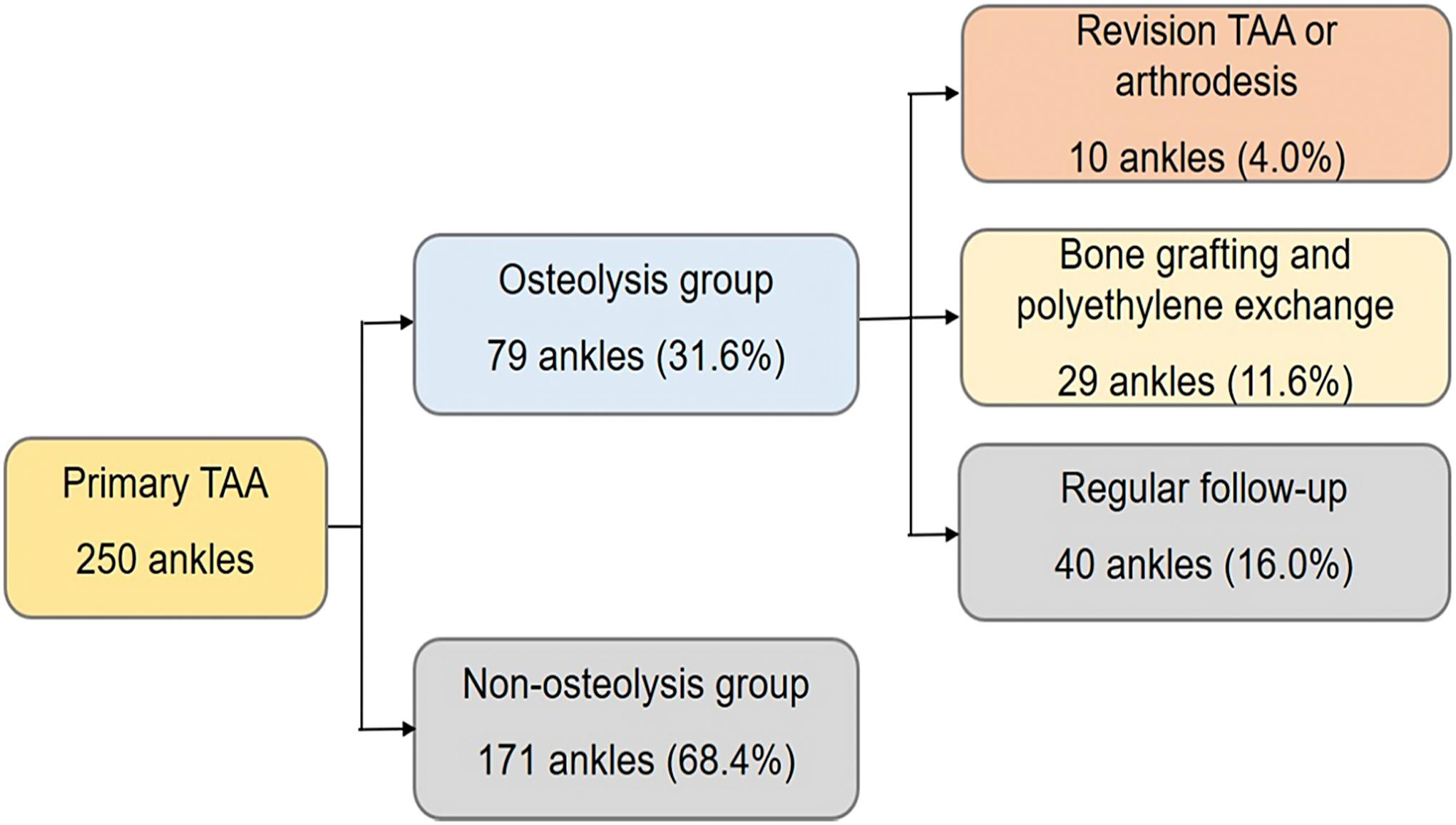Total ankle arthroplasty (TAA) continues to gain favor as an alternative to ankle arthrodesis. However, periprosthetic osteolysis is a risk factor for a poor outcome. JBJS Editor-in-Chief Dr. Marc Swiontkowski offers this perspective on a new JBJS study examining osteolysis after TAA in a large single-center series.
I have commented in various editorial pieces over the last 5 years on the slow but steady improvement in the reliability of total ankle arthroplasty (TAA). The improvement has come primarily from centers with high volume and experience gained with various implant systems. The TAA community is expanding as data on technique, implant positioning, and patient selection are disseminated through investigative efforts.
In the August 3 issue of JBJS, Lee and Lee add to the growing body of information aimed at making TAA outcomes more predictable. They followed 236 patients (250 ankles) with end-stage arthritis who underwent TAA performed by a single experienced surgeon. All patients received the same type of mobile-bearing prosthesis.
Prevalence of Osteolysis and Subsequent Treatment
- The authors found a “considerable” rate of periprosthetic osteolysis: 31.6% (79) of the 250 ankles. This was detected at a mean of 28.8 months after TAA.
- Of the 79 ankles with osteolysis, 40 were closely monitored with no surgical treatment, 29 underwent bone grafting and exchange of the polyethylene inlay, and 10 ankles underwent revision TAA or arthrodesis. Of the ankles treated with bone grafting, no further progression of osteolysis was evident at a mean of 60.2 months after grafting.
Clinical Outcomes
- In comparing patients with and without osteolysis, the authors found that both groups showed improvements in the total AOS score exceeding the minimal clinically important difference for this outcome. However, the osteolysis group had significantly lower clinical outcomes for all variables at the final follow-up (p < 0.05).
- Regarding the 23 ankles that did not show further progression of osteolysis after bone grafting, the clinical outcomes were significantly better at a mean follow-up of 60.2 months compared with values before bone grafting.
- Preoperative and postoperative factors were analyzed in relation to developing osteolysis. Only rheumatoid arthritis was significantly associated.
Long-Term Survival of TAA
As concluded by the authors, “the prevention and appropriate treatment of osteolysis are crucial for the satisfactory long-term survival of TAA.” They note that most of the osteolytic lesions in their series developed within 3 years, suggesting careful monitoring in the early period following TAA. They also comment on the difficulty of using radiographs alone to track the development and progression of osteolysis. (CT was used for all cases in the osteolysis group.)
Data from studies such as this can help inform efforts by clinicians and the industry engineering community in addressing the problem of osteolysis. As refinements in implant design, surgical technique, and treatment and prevention are made, the outcome reliability for TAA will continue to improve.
The authors of this study discuss their investigation. Access the Author Insights video.
Marc Swiontkowski, MD
JBJS Editor-in-Chief
Additional insights from the literature can be found in this JBJS Clinical Summary on Total Ankle Replacement.




